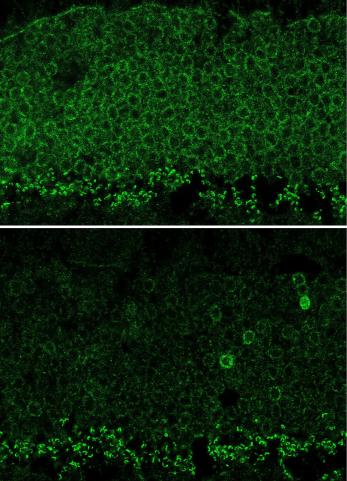 The tissue in the back of the eye called the retina contains two types of cells that convert light into electrical signals sent to the brain. Rod photoreceptors enable vision in dim light, while cone photoreceptors enable color vision and the ability to see in
The tissue in the back of the eye called the retina contains two types of cells that convert light into electrical signals sent to the brain. Rod photoreceptors enable vision in dim light, while cone photoreceptors enable color vision and the ability to see in
In a series of studies, Anand Swaroop, Ph. D., chief of NEI’s Neurodegeneration and Repair Laboratory, and his team asked if saving rods could prevent the loss of cones, thus preserving daylight and color vision.
During development, Nrl determines whether a photoreceptor precursor cell becomes a rod or a cone. In previous studies, Swaroop and colleagues showed that mice engineered to lack the Nrl gene develop
«The evidence suggested to us that coaxing rods into becoming more
To test the strategy, the researchers used a new genome editing technology called CRISPR, which stands for clustered regularly interspaced short palindromic repeats. CRISPR is like a molecular pair of scissors that can be programmed to snip a specific DNA sequence with precision.
NEI postdoctoral research fellow and the study’s first author, Wenhan Yu, Ph. D., developed a method for applying CRISPR in photoreceptors. His strategy uses an
In all three mouse models, rod degeneration was prevented or slowed, although less benefit was achieved when the therapy was introduced in older animals. Importantly, the benefit was evident in all three models, regardless of the specific gene defect in the mouse.
«Unlike conventional gene therapy, in which a normal gene is introduced to replace the defective gene, this approach could treat retinal degeneration caused by a variety of mutant genes," explained Zhijian Wu, Ph. D., head of the NEI Ocular Gene Therapy Core and senior author of the study.
More research is needed before the therapy is ready for testing in a clinical trial. The safety of CRISPR has yet to be established and information is needed about its possible adverse effects. Nevertheless, these findings provide proof of concept for


